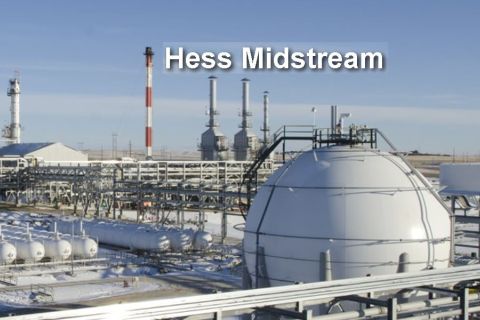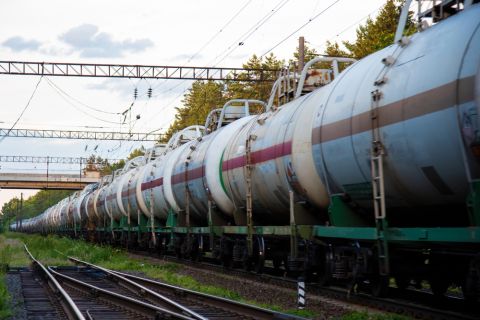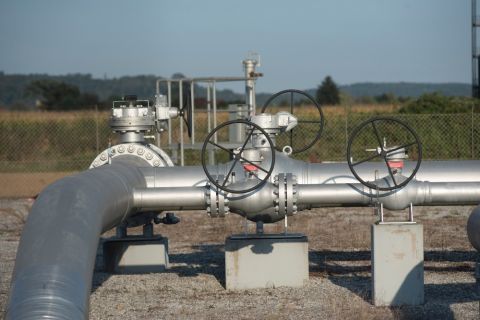For a good indication of where Wall Street analysts stand on natural-gas fundamentals, one could track their ever-increasing price forecasts, or simply scan the titles of their reports: "The Sizzling Summer of 2000" by First Union Securities, "We'll See Your $3 Natural-Gas Price and Raise You 55 Cents" by Raymond James & Associates Inc., and "Natural Gas Macrocommentary: Windfall!" by Morgan Keegan & Co. Inc. The story behind the catchy titles is this: deliverability is down and so is storage, and electrical generation customers are turning the summer months into a critical demand season. "The bottom line on our U.S. gas forecast is that supply and demand is tightened to the point where average prices should generally stay above $3.50 [per thousand cubic feet] as suppliers struggle to meet U.S. demand," according to Raymond James. On May 22, the firm raised its U.S. forecast for 2000 from $3 to $3.55 per Mcf, making the firm one of the biggest bulls on the Street. "We expect gas prices will remain well above the $3.50 level during the next 12 to 18 months." Over at Simmons & Co. International, David Pursell, the Houston oil and gas investment banker's vice president of upstream research, was in the midst of fine-tuning his outlook. His 2001 forecast was $2.60, but it won't stay that low for long. "Clearly it's going to be in the $3 range for this year and next," Pursell said. "It is moving up." David Garcia at First Union Securities in Houston has an official floor price of $2.50 per Mcf. But he said that he wouldn't be surprised to see prices surge above $3.50 this summer. "Once the summer season begins, nominally in June 2000, we believe it will become all too evident that there is simply not enough natural gas available at the wellhead to meet traditional industrial base-load requirements, meet expanding summer demands, and rebuild storage for the winter of 2000-01, even assuming continuation of warm weather patterns," Garcia said. Bob Morris, E&P analyst for Salomon Smith Barney in New York, raised his 2000 composite forecast from $2.78 per Mcf to $3.25, and his 2001 forecast from $2.65 to $3.25. Constricted 1999 capital expenditures resulted in a gas deliverability decline of about 4%, from about 60.2 billion cubic feet per day to an estimated 58 Bcf, Garcia said. And even though 2000 capital budgets are some 10% to 15% higher than last year, that may not be enough to maintain current deliverability levels, he observed. Ronald Barone, who follows natural gas for PaineWebber Inc. in New York, detailed the resulting storage injection downturn. The week ending May 12, 46 Bcf of gas was injected into storage, compared with 58 Bcf the prior week, 79 Bcf during the comparable week in 1999, and 92 Bcf at that time in 1998. "At this point, for the industry to reach the 3,000 Bcf targeted storage level by Nov. 1, the weekly injection requirement must be 76 Bcf," Barone said. The refill rate in 1999 averaged 60 Bcf per week and the five-year average is 71 Bcf per week. Total storage in mid-May was 1,163 Bcf versus 1,559 Bcf at that time last year. The storage level is even more alarming when one considers that December 1999 and January and February 2000 were the warmest in the U.S. in 105 years, Garcia said. "Maybe storage is being used to paper over, at least temporarily, the deficit between production at the wellhead and underlying consumption," he said. Morris said the domestic gas rig count would have to total more than 800 just to return domestic deliverability to where it was in the beginning of 1999. Currently, the count is around 634. Raymond James' analysts expect the upcoming winter to see severe upward price spikes. Their model suggests that the U.S. will enter the heating season with 2,300 Bcf of gas in storage, about 700 Bcf less than at the beginning of the 1999-2000 winter heating season. Pursell suggested that fuel switching probably won't be as much of a factor as it usually is in a tight gas market because distillate inventories also are at historically low levels. "I think we're in a situation where both key winter heating fuels could be in short supply," he warned. "If you're short on distillate and natural gas, your ability to switch over to a more abundant fuel is pretty much out the window. "The world's not going to come to an end here. But this has the potential to have significant impacts on key industrial customers. They may find themselves curtailed and actually have to shut down operations." -Jodi Wetuski
Recommended Reading
Kinder Morgan Exec: Don’t Count Out Midstream in M&A Frenzy
2024-04-02 - Kinder Morgan’s Allen Fore said 2024 should be an ‘interesting’ year in M&A during a discussion at DUG GAS+ Conference and Expo.
Hess Midstream Announces 10 Million Share Secondary Offering
2024-02-07 - Global Infrastructure Partners, a Hess Midstream affiliate, will act as the selling shareholder and Hess Midstream will not receive proceeds from the public offering of shares.
EQT CEO: Biden's LNG Pause Mirrors Midstream ‘Playbook’ of Delay, Doubt
2024-02-06 - At a Congressional hearing, EQT CEO Toby Rice blasted the Biden administration and said the same tactics used to stifle pipeline construction—by introducing delays and uncertainty—appear to be behind President Joe Biden’s pause on LNG terminal permitting.
Canadian Railroad Sees Growth in 2024 as Other Transport Centers Struggle
2024-01-25 - Propane exports drove up a cargo increase at the end of 2023, contributing to a year-end bump in Canadian National Railway earnings.
Tallgrass Energy, Bridger Starts Open Season for Pony Express Pipeline
2024-01-25 - Tallgrass Energy and Bridger Pipeline are looking for customers for the Northwest portion of the Pony Express line in Wyoming and Colorado.





